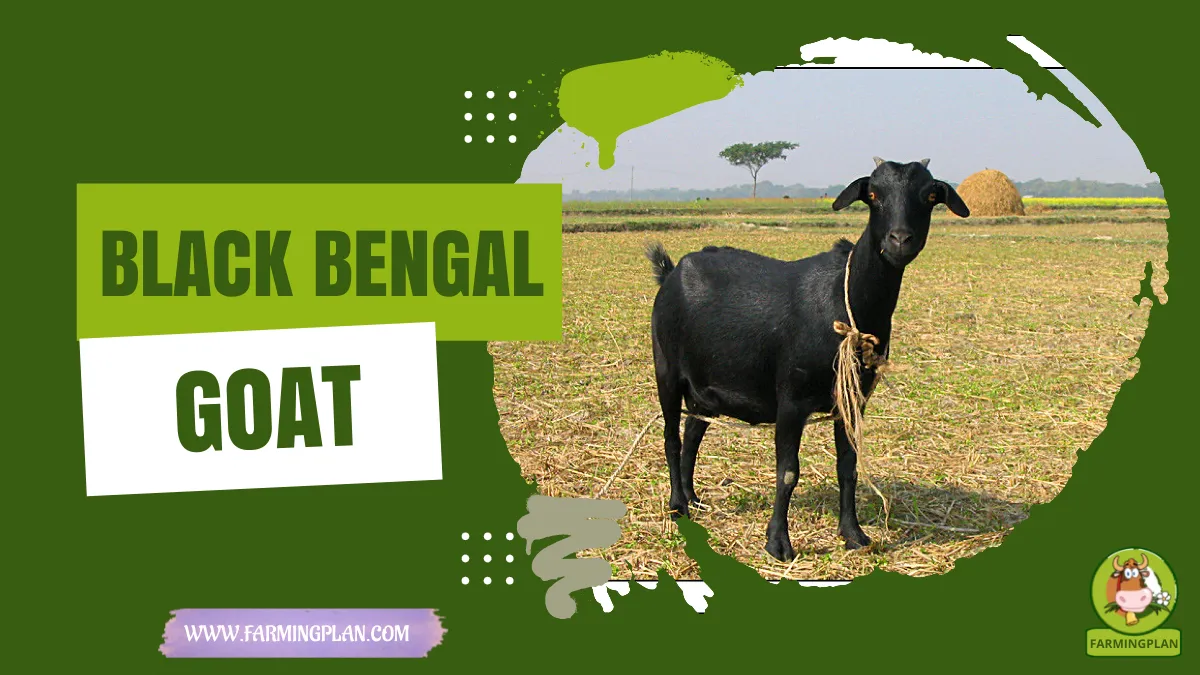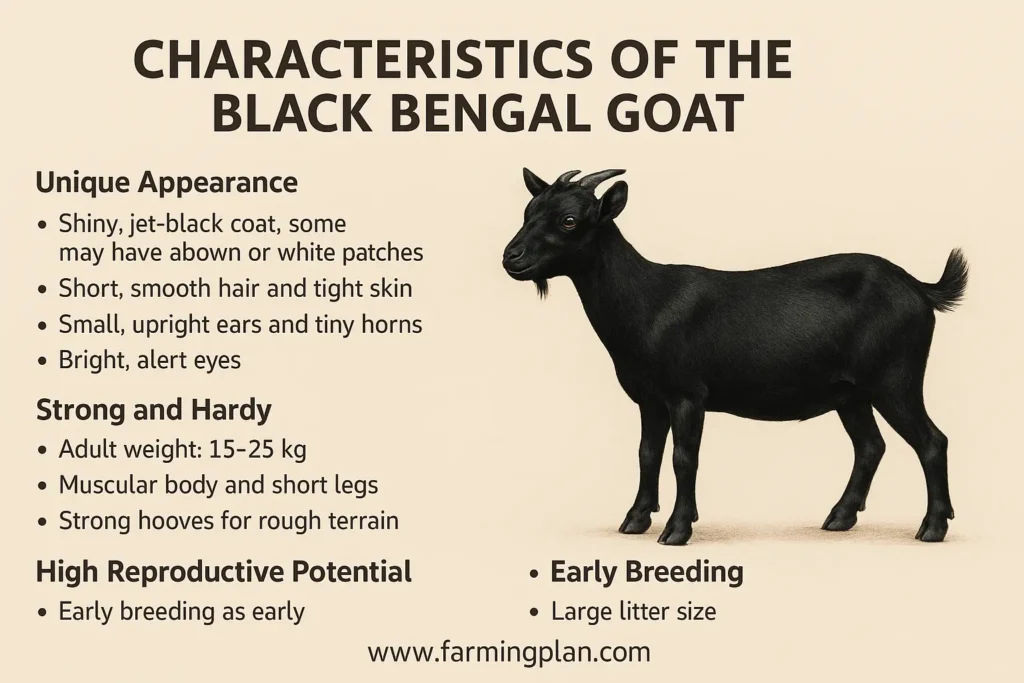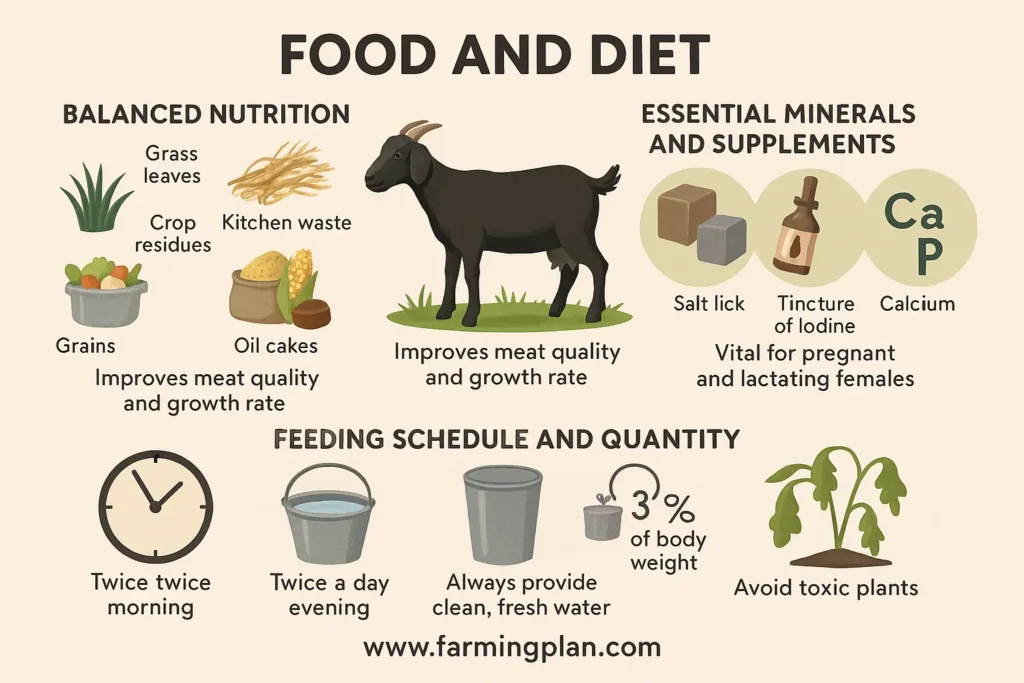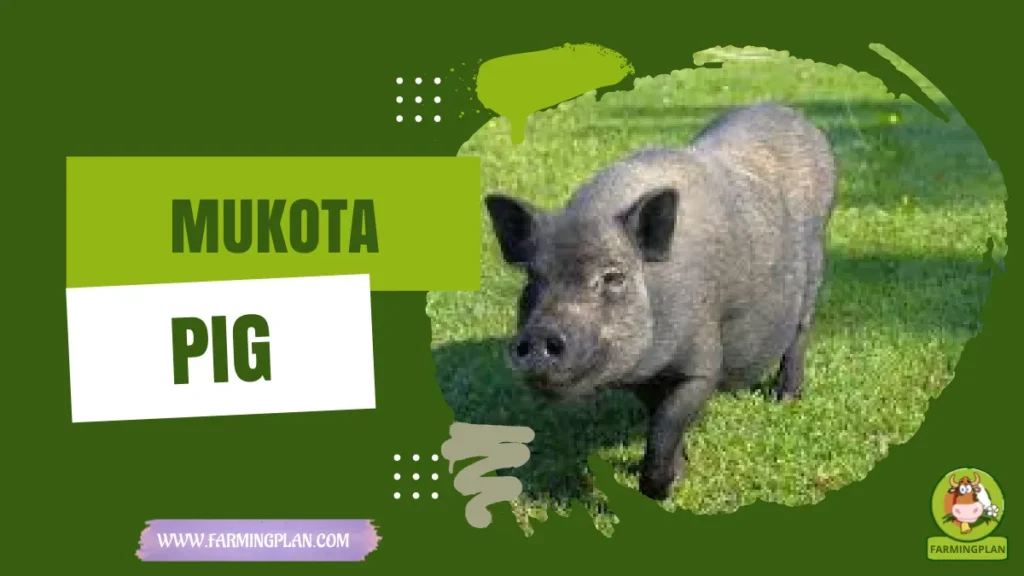The Black Bengal Goat is one of the most prized goat breeds known for its incredible quality meat, disease resistance, and adaptability. Farmers and breeders across Bangladesh and West Bengal love this dwarf-sized animal for its rapid growth, high litter size, and low maintenance needs. Whether you’re just starting in the goat farming business or looking to expand your herd, this breed offers both profit and purpose. In this article, you’ll discover everything from its origin and traits to feeding tips and expert care. Let’s explore why the Black Bengal continues to stand out in the world of domesticated animals.

History & Origin of the Black Bengal Goat
The Black Bengal Goat is native to Bangladesh and parts of eastern India, including West Bengal, Odisha, and Bihar. This small-sized breed has been raised for centuries by rural communities who value its toughness, adaptability, and excellent meat quality. It thrives in diverse environments, from dry land to humid areas, making it ideal for small farmers.

Cultural and Economic Importance
For generations, goat herders and small-scale farmers have depended on this breed for their livelihoods. Its ability to reproduce quickly and grow fast has made it a key player in the goat farming business. In regions like West Bengal, it’s more than just a goat—it’s part of the cultural identity and rural economy.
Read More: Attappady Black Goat: Successful Farming
Scientific Interest and Research
Researchers from institutions like the Bangladesh Agricultural University and Chattogram Veterinary and Animal Sciences University have studied this breed extensively. They’ve looked into its genetic diseases, disease resistance, and productivity. The Bangladesh Journal of Animal Science often publishes findings on its breeding, genome size, and prolificacy. With growing demand for incredible quality meat, the Department of Animal Breeding & Genetics is working to preserve and improve the breed using genome analysis, gene structure annotation, and gene models. These efforts ensure that the Black Bengal continues to thrive as one of the most important goat breeds in Asia.
Characteristics of the Black Bengal Goat
The Black Bengal Goat is not big, but don’t fall for the small body size. They have a strong and muscular frame that helps them live through different situations. The typical weight for an adult goat is between 15 and 25 kg and males and females usually weigh the same. With such short legs and strong hooves, you could say horses are meant for varying and bumpy terrain.

Unique Appearance
This breed has a shiny, jet-black coat, although some may show brown or white patches. Their short, smooth hair and tight skin contribute to excellent skin quality, making their hides valuable in the leather industry. The ears are small and upright, and most have tiny horns. Their bright, alert eyes reflect their energetic nature. One of the most admired traits of the Black Bengal Goat is its rapid growth rate and early maturity. Kids become ready for breeding as early as 6 to 7 months old, which boosts goat prolificacy. This means more litters per year and higher profits for farmers.
High Reproductive Potential
This breed is known for a large litter size, with females often giving birth to twins or triplets. The gestation period is around 145–150 days. Because of their extraordinary quality genes, they reproduce more frequently and consistently than many other breeds of goats. Thanks to natural disease resistance and strong gene models, the Black Bengal adapts well to various climates. Studies on gene ontology and domestic goat genome show that this breed carries specific traits linked to meat quality, immune response, and reproductive health.
Nature and Temperament of the Black Bengal Goat
The Black Bengal Goat is naturally calm, friendly, and easy to manage. This makes it a great choice for beginners in the goat farming business. Being easy to handle, all family members, young or old, can work with chickens without anxiousness. Goats usually act calm and are fast at getting used to living near people.
Perfect for Small-Scale Farmers
Due to their small size and easy-going personality, Black Bengal Goats are ideal for farmers with limited space. They don’t require fancy setups and are comfortable in small pens or open fields. They get along perfectly in groups, so farmers can use communities for their farming.
Read More: Assam Hill Goat: Start A Profitable Farm
Adaptable to Various Environments
These goats are highly adaptable. Whether raised in the humid fields of West Bengal or dry areas of Bangladesh, they can survive and thrive. Their strong genes give them the ability to resist stress and adjust to new environments easily, which reduces the chances of goat by loss. Because of their calm nature and resistance to common stress-related behaviors, Black Bengal Goats require very little emotional or behavioral management. This saves time and effort for farmers and makes them a favorite among goat herders across South Asia.
Food and Diet of the Black Bengal Goat
The Black Bengal Goat thrives on a simple but nutritious diet. Their food includes grass, leaves, crop residues, and kitchen waste. To support their growth rate and meat production, they also need grains like wheat bran, maize, and oil cakes. Balanced nutrition improves their meat quality and helps in faster weight gain.

Essential Minerals and Supplements
To maintain good health, goats need extra minerals. Salt licks and mineral blocks are important to prevent deficiencies. Feeding goat with iodine or goat with tincture iodine can help fight off infections and improve their disease resistance. Calcium and phosphorus are vital for pregnant and lactating female goats.
Feeding Schedule and Quantity
Feed the goats twice a day—morning and evening. Offer clean, fresh water at all times. A full-grown Black Bengal Goat typically consumes 3% of its body weight in dry matter daily. Younger goats and lactating females may need more feed to meet their energy needs. Avoid feeding moldy or spoiled food. Some plants like castor, oleander, and certain wild herbs can be toxic. These can cause bloating, acidosis disease, or even death. Always clean the feeding area to prevent contamination and spread of disease.
Never change your goat’s diet suddenly—make any feed change slowly over a week to avoid stomach upset or stress.
Usage and Purpose of the Black Bengal Goat
The main purpose of raising the Black Bengal Goat is for its incredible quality meat. Its meat is tender, flavorful, and low in fat, which makes it highly desirable in local and international markets. Thanks to their fast growth rate, these goats are ready for market sooner, which increases farmer profits.
Read More: Afar Goat: A Hardy And Prolific Breed From The Horn Of Africa
Useful in Small-Scale Farming
Because of their small size and low feeding needs, Black Bengal Goats are perfect for small landholders. A successful goat farming business can be started in homes with little space. The large numbers of puppies produced by each dog help keep their breeding or sale businesses going. This breed supports the rural economy by creating income for farmers, especially women and youth. From selling goat milk and meat to breeding bucks and does, each part of the animal has economic value. In some areas, goats are even used in community farming and micro-business ventures.
Improving Goat Genetics
Due to their strong genes and high disease resistance capacity, they’re often used in breeding of goats to improve other local breeds. The Department of Animal Breeding & Genetics recommends the Black Bengal for genetic improvement programs in South Asia. Many universities, like Bangladesh Agricultural University, use this breed in studies involving goat genome analysis, gene structure annotation, and buck semen quality attributes. These studies help enhance goat prolificacy, health, and future productivity.
Special Features of the Black Bengal Goat
The Black Bengal Goat is famous for its extraordinary quality meat—tender, tasty, and in high demand. It also has premium skin quality, which is used to produce high-grade leather. This dual value makes the breed more profitable for both meat and hide markets.
High Prolificacy Rate
One of the breed’s most impressive traits is its high goat prolificacy. A single female goat often gives birth to twins or triplets, and sometimes even quadruplets. This makes herd expansion faster and helps small farmers earn more in a short time. These goats show a natural ability to fight off common genetic diseases. Their disease resistance capacity lowers the risk of infection, reducing veterinary costs. Researchers studying the domestic goat genome found that this breed has specific genes linked to stronger immunity.
Adaptability to Harsh Conditions
The Black Bengal Goat can survive in poor weather, low-quality pastures, and limited care—conditions that would challenge other goat breeds. This makes them an ideal choice for farmers in remote or resource-limited areas. Thanks to their dwarf-size, these goats don’t require large pens or excessive food. Their small frame allows farmers to raise more animals in less space without reducing comfort. Their calm temperament and minimal grooming needs also reduce labor.
Health Issues & Prevention in Black Bengal Goats
Despite their strong disease resistance, Black Bengal Goats can still suffer from common diseases like acidosis disease, pinkeye disease, and various cardiovascular diseases. Infected goats may show symptoms such as loss of appetite, lethargy, or abnormal behavior.
Recognizing Symptoms Early
Early signs of illness include swelling, discharge from eyes or nose, and sudden weight loss. Prompt identification helps prevent the spread of infection and reduces death of animal rates in herds. Regular cleaning of pens and proper sanitation are key to controlling diseases. Using goat with iodine or goat with tincture iodine can disinfect wounds and prevent infections. In accordance with your veterinarian’s advice, getting your pet vaccinated stops many diseases.
Preventive Care and Management
Their disease resistance is improved by proper food, water and housing. Identifying animals with the disease as soon as possible and carefully watching the herd reduce the chance of outbreaks. Breeders often select for disease resistance capacity when planning mating to improve herd health. Studies from institutions like Chattogram Veterinary and Animal Sciences University and the Department of Animal Breeding & Genetics continue to explore the genome analysis of Black Bengal Goats. The goal is to help the body resist genetic diseases and to provide better care.
Step-by-Step Farming Guide for Black Bengal Goats
Raising Black Bengal Goats successfully starts with good planning and daily care. From building a clean shelter to choosing healthy goats, feeding them balanced nutrition, and monitoring their health closely, every step matters. Using the same simple steps helps farmers get better results in their meat, have more baby animals and keep the herd healthy. When you give them proper care, goats this size can live comfortably and give their owners a dependable, easy-to-manage farm.
Step 1: Preparing the Shelter
Build a clean, well-ventilated pen that protects goats from rain and extreme heat. Keep the cages slightly higher off the ground to stop water from entering and causing sickness. Give your goats enough space to move around and reach their needs.
Step 2: Selecting Healthy Goats
Choose goats with shiny coats, bright eyes, and no signs of disease. Look for excellent quality genes and healthy female goats with good body weight. Avoid goats showing symptoms of infections or injuries.
Step 3: Feeding and Nutrition Management
Provide fresh grass, leaves, and grains twice daily. Use mineral blocks and iodine supplements like goat with iodine to boost health. Monitor feed quantity based on age, weight, and production needs to improve meat production and milk production.
Step 4: Breeding and Reproduction
When choosing animals, go for strong males with the best quality semen. Keep an eye on your goats from beginning of pregnancy until birth which is at around 145 days. Give pregnant goats a healthy diet and allow them enough time to rest to make more baby goats and reduce the risk of loss.
Step 5: Daily Care and Monitoring
Check goats daily for any signs of illness or injury. Keep the pen clean and provide fresh water at all times. Isolate any infected goat immediately to prevent disease spread.
Step 6: Disease Prevention and Treatment
Make sure your pet gets all their shots and consult the vet any time they are sick. Choose goat with tincture iodine as your first treatment for all wounds. Sanitation helps you avoid common illnesses and promote your ability to resist diseases.
Step 7: Record Keeping
Keep detailed records of breeding, health checks, vaccinations, and growth rates. +This helps track productivity and manage your herd efficiently.
Expert Tips & Practices for Black Bengal Goat
To succeed with Black Bengal Goat farming, focus on selecting healthy goats with strong genetics and keep their living space clean. Proper nutrition and regular check-ups stop many diseases from happening. If you manage your records and remain updated with what’s new, your farm will perform well and your goats will do well. Start with goats that have proven excellent quality genes and strong health records. This improves herd productivity and disease resistance over time.
Maintain Proper Hygiene
Clean pens regularly and disinfect using safe solutions like goat with iodine to reduce infection risks. Good hygiene supports overall animal health and growth. Provide a mix of forage, grains, and mineral supplements to support fast growth rate and excellent meat quality. Avoid sudden diet changes to prevent digestive problems.
Monitor Health Closely
Check for early symptoms of most diseases and address them immediately. Ensure all goats are vaccinated and put any goat with fever or diarrhea into isolation. Track breeding cycles, health treatments, and growth data. This helps make informed decisions and improves herd management efficiency. Stay updated with studies from universities like Bangladesh Agricultural University for new insights on genetics and disease control. Applying modern research can boost farm success.
FAQ
What makes Black Bengal Goats special?
Black Bengal Goats are known for their small size, fast growth, high prolificacy, and excellent meat and skin quality. Their natural disease resistance also makes them easier to raise than many other breeds.
Where do Black Bengal Goats originate from?
They primarily originate from the Bengal region, including West Bengal in India and Bangladesh. This breed is well adapted to the local climate and conditions.
What do Black Bengal Goats eat?
They eat a variety of grasses, leaves, crop residues, and grains. Mineral supplements, especially iodine, are important for maintaining their health and boosting disease resistance.
How many kids can a Black Bengal Doe have?
A Black Bengal doe often gives birth to twins or triplets, sometimes even quadruplets, making it highly prolific and profitable for farmers.
What common diseases affect Black Bengal Goats?
They can often get acidosis and pinkeye, yet their immune system is generally strong. Good hygiene, proper diet and immunizations usually stop most health problems.
Conclusion
The Black Bengal Goat stands out as a hardy, highly productive breed favored for its exceptional meat, skin quality, and prolific reproduction. Since they come from Bengal, these goats fit into almost any situation and need very little care which makes them suitable for both hobbyists and farmers with little space. If Black Bengal Goats receive a proper diet, are housed hygienically and are well cared for, they do very well and are valuable to own or farm. Their natural disease resistance, combined with strong genetics, ensures a sustainable and rewarding farming experience. Whether for meat production or breeding, this breed continues to be a valuable asset in South Asian livestock farming.


